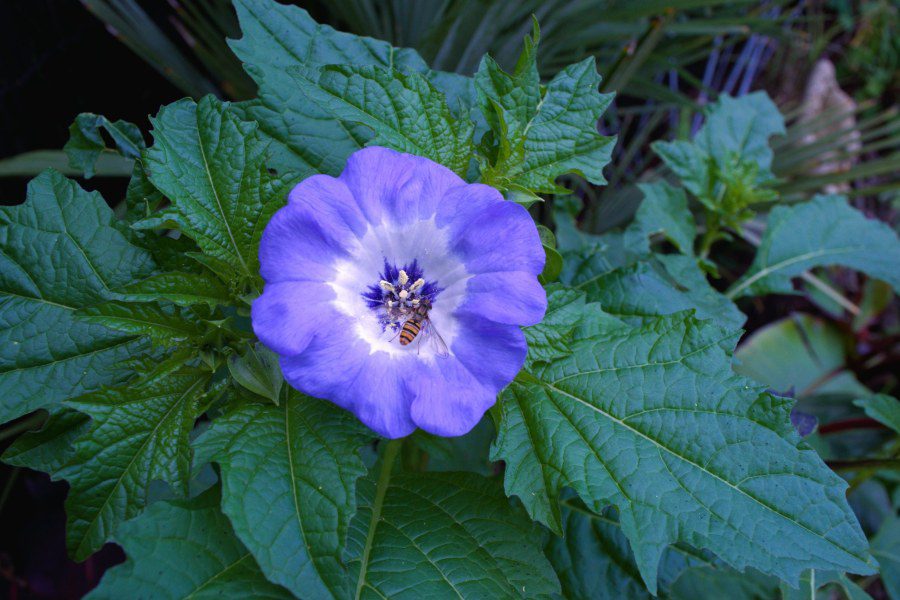Shoo fly plant (Nicandra physalodes), also known as the Apple of Peru or Nicandra, is an annual plant renowned for its striking bell-shaped blue to violet flowers and distinctive lantern-like seed pods. This plant is not only ornamental but also has practical uses, such as repelling insects, particularly whiteflies. Understanding the optimal time to sow shoo fly seeds is crucial for achieving the best growth and flowering results.
Ideal Sowing Time
- Spring Sowing (Outdoors):
- Timing: The best time to sow shoo fly seeds outdoors is in the spring, after the danger of frost has passed. This typically falls between late April and early June, depending on your climate zone.
- Soil Temperature: Ensure that the soil temperature is consistently above 50°F (10°C) for optimal germination.
- Early Spring (Indoors):
- Timing: For an earlier start, you can sow shoo fly seeds indoors about 6-8 weeks before the last expected frost date in your area. This usually means sowing the seeds indoors from late February to early April.
- Germination Temperature: Maintain a warm environment with a soil temperature of 70-75°F (21-24°C) for successful germination.
Sowing Instructions
- Seed Preparation:
- Shoo fly seeds do not require any special treatment before sowing. However, soaking them in water for 12-24 hours can help speed up germination.
- Indoor Sowing:
- Containers: Use seed trays or small pots with a well-draining seed-starting mix.
- Sowing Depth: Sow the seeds about 1/4 inch (6 mm) deep. Cover lightly with soil.
- Light: Place the containers in a bright location but out of direct sunlight until germination occurs. A sunny windowsill or a grow light can be ideal.
- Watering: Keep the soil consistently moist but not waterlogged. Use a spray bottle to mist the soil surface to avoid displacing the seeds.
- Transplanting: Once the seedlings have developed their first set of true leaves and the outdoor conditions are favorable, harden them off by gradually exposing them to outdoor conditions over a week. Then, transplant them to their final outdoor location, spacing them 18-24 inches apart.
- Outdoor Sowing:
- Site Selection: Choose a sunny location with well-draining soil. Shoo fly plants prefer fertile, slightly acidic to neutral soil.
- Sowing Depth: Sow the seeds directly into the prepared soil at a depth of 1/4 inch (6 mm).
- Spacing: Thin the seedlings to 18-24 inches apart once they are large enough to handle. This spacing ensures good air circulation and prevents overcrowding.
- Watering: Keep the soil evenly moist until the seeds germinate and the seedlings are established. Once established, shoo fly plants are relatively drought-tolerant.
Aftercare
- Watering:
- Water regularly, especially during dry spells. Avoid overwatering, as shoo fly plants do not like waterlogged soil.
- Fertilization:
- Shoo fly plants generally do not require heavy feeding. A balanced, all-purpose fertilizer applied once or twice during the growing season can promote healthy growth and flowering.
- Pest and Disease Management:
- Shoo fly plants are relatively pest-resistant, thanks to their insect-repellent properties. However, monitor for common garden pests and treat as necessary.
- Ensure good air circulation to prevent fungal diseases, particularly in humid climates.
- Deadheading:
- Remove spent flowers to encourage continuous blooming and prevent self-seeding if you do not want the plant to spread uncontrollably.
Conclusion
Shoo fly plants are an attractive and useful addition to any garden, known for their ability to repel insects and their charming flowers. By sowing the seeds at the right time, either indoors in early spring or directly outdoors after the last frost, gardeners can enjoy a lush, healthy display throughout the growing season. With proper care and attention, shoo fly plants can thrive and enhance the beauty and functionality of your garden.


